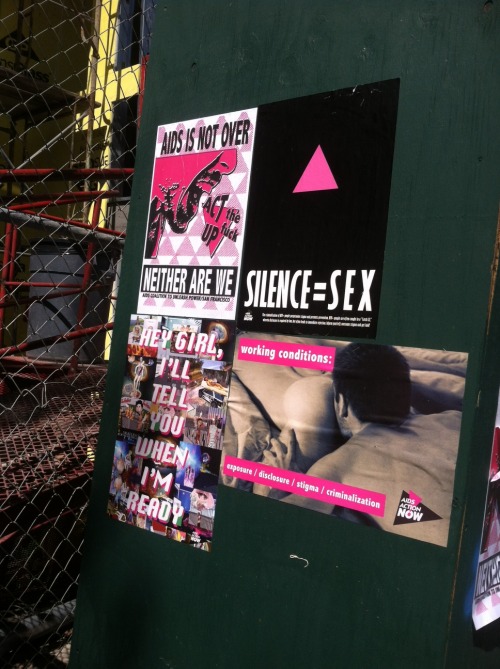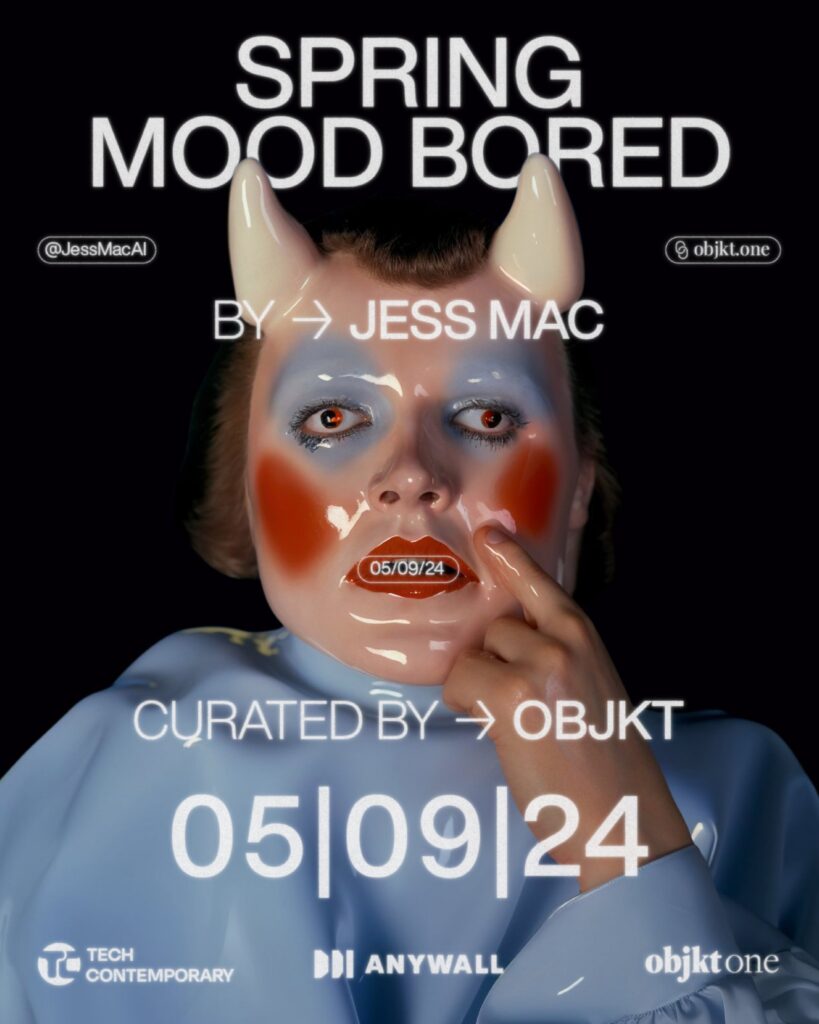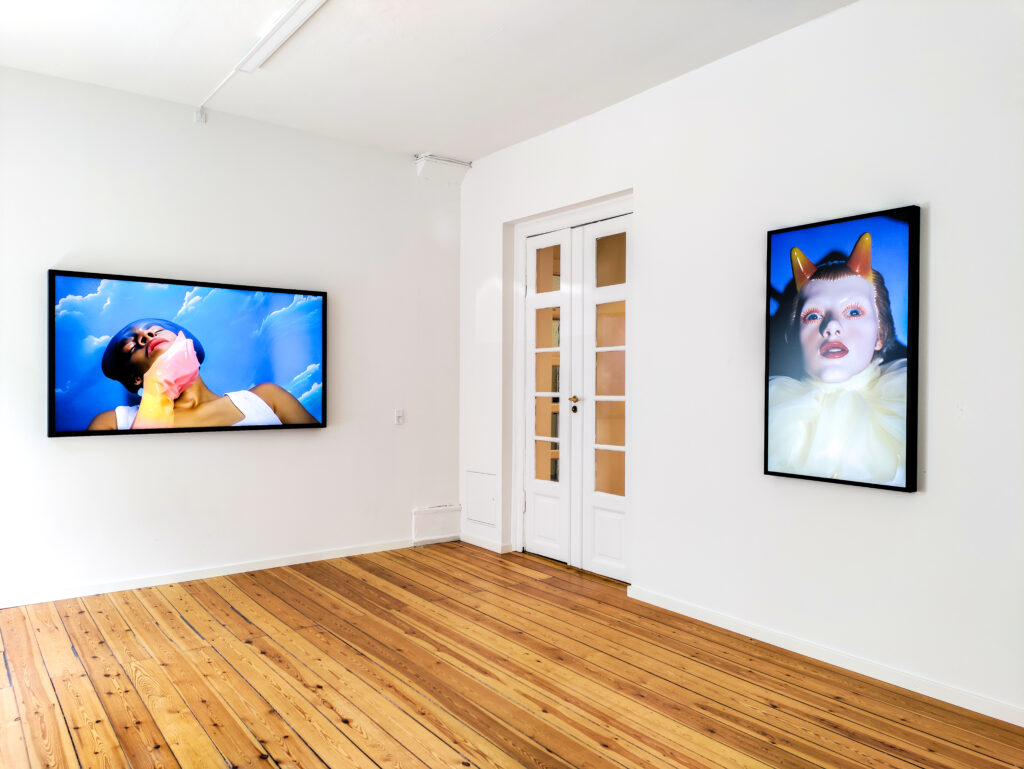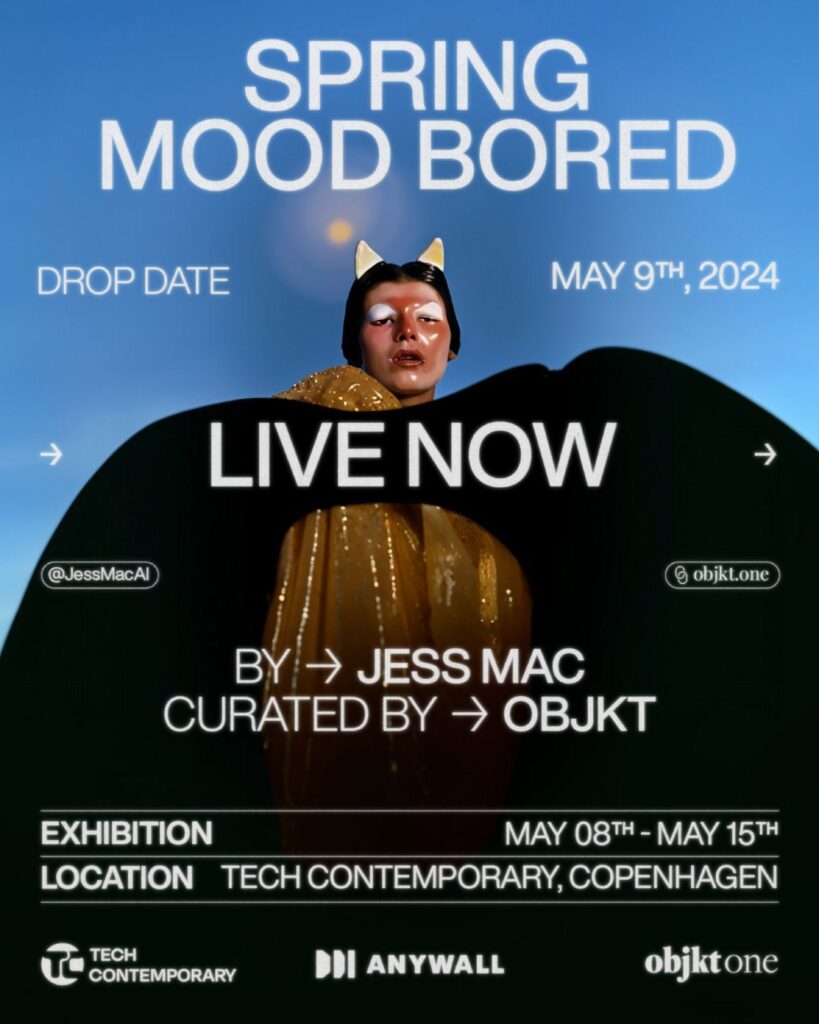SPRING MOOD BORED
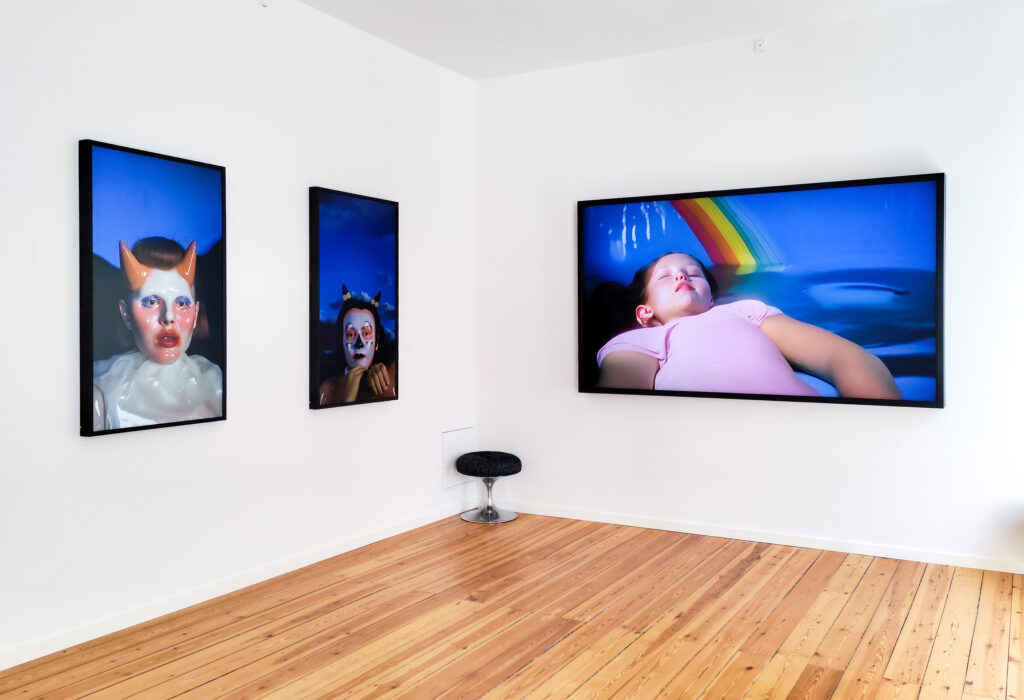
Exhibition on Tech Contemporary, Copenhagen, May 08-15
There is a new rising group of artists working with prompt and image to video tools that sharply explore the uncanny qualities of these AI generated images in unique, personal ways. Undoubtedly, Jess Mac stands out as one of the most fascinating among these artists.
Jess has been a multidisciplinary artist for over 25 years – their practice includes graphic novels, digital art, performance, installation, video, GIF and community art – exploring queer politics, embodiment and criminalization. They have always been interested in the ways technology informs our identities and relationships. With AI generated images, Jess found an expansive realm for exploration.
As the collaboration with AI, at this stage, often results in unpredictable, surreal results, Jess believes that this allows for a queering of the imagery, undoing normative representations of gender, kinship and embodiment with ease; and simultaneously illustrating the dissociated affect inherent in both mediated relations and traumatized individuals.
Jess is also critical of the biases of image generating platforms and the ways in which these corporations define what is ideal or what is possible. So, according to them, this presents an opportunity to explore queerness and disability within a highly loaded context, which makes for a rich dialogue about contemporary society.
The seven video pieces of SPRING MOOD BORED, the exhibition developed for Objkt.one, continue these explorations. They are perfect examples of Jess’ unique ability of creating enticing and disquieting worlds inhabited by strange yet familiar beings.
Looking at these videos, it’s hard to say if the characters are smiling or screaming. The apparent cheerfulness of these colorful works only makes them more disturbing. The hybrid bodies, the shiny plastic-like skins, the odd viscous sounds, all elements are engaging while being profoundly unsettling. Pleasure, pain and fear seem to be also morphing together, along with the morphing shapes in the images.
It is within these unsettling realms that their work finds its potency and significance, urging us to confront the various shades of human experience we often prefer to overlook.
